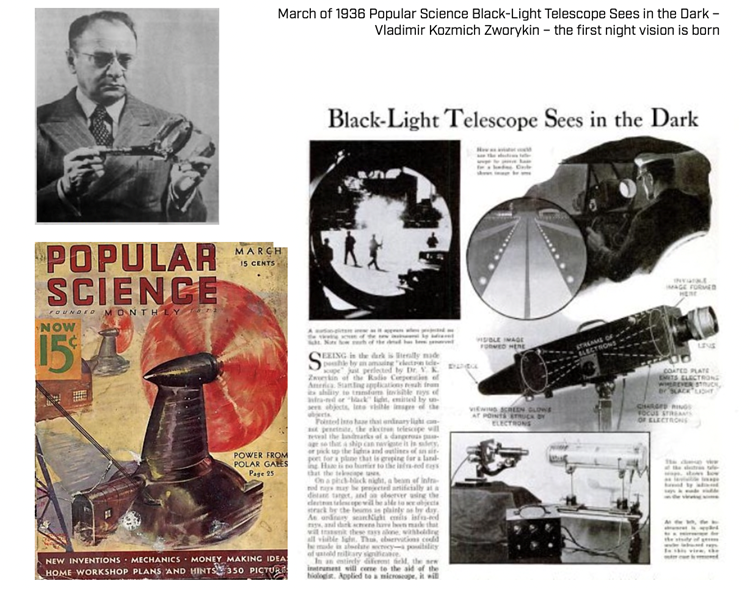Lesson 4 - Pioneering the Unseen: A Journey Through Night Vision and Thermal Imaging Technology
Sep 14th 2023
The evolution of technology is often an intricate tapestry woven by the brilliance of curious minds across generations. A journey that began over a century ago, with the discovery of the cathode ray tube (CRT) by Ferdinand Braun in 1895, laid the groundwork for a realm of innovation that would eventually birth the world of night vision and thermal imaging technology. Today, we stand on the shoulders of these visionary pioneers, exploring the unseen with devices that have reshaped industries, from military operations to scientific research and beyond.
The Early Glimmers of Television and Beyond
In the early 20th century, the CRT technology found its first steps into television through the work of Boris Rosing and the experimental display of geometric shapes on screens. J.J. Thomson's discoveries in the late 1800s furthered the understanding of electron beams and their manipulation within CRTs. This marked the beginning of a fascinating journey into the realm of electro-optics, a discipline that continues to shape our modern world.
Birth of the Electro-Optical Converter
As the 1920s unfolded, the groundwork was laid for the creation of the electro-optical converter. Visionaries like G. Holst and H. de Boer envisioned this technology, but it wasn't until 1934 that a working device, named the "Holst glass," came into existence. The concept of the electro-optical converter brought with it the dawn of night vision technology, opening new horizons for vision in low-light conditions.
A Glimpse into Darkness: Early Night Vision
As the 1930s progressed, scientists around the world were captivated by the possibilities of transmitting images beyond the visible spectrum. A Russian-American inventor and television pioneer perfected the first night vision scope capable of converting invisible infrared rays into visible images. This breakthrough had wide-ranging applications, from aiding nautical navigation to assisting biologists in their studies of microscopic life.

The Unveiling of Electron Imaging
In the midst of this flurry of innovation, German experimental physicist Walter Schaffernicht published his work on "On the Conversion of Photographs into Electron Images" in 1935. This work paved the way for the creation of the electron image tube, a device capable of reproducing images with unparalleled sharpness and precision. The filing of the international patent application in 1936 marked a pivotal moment in the journey towards night vision and thermal imaging technology.
Embracing the Unseen
The culmination of these efforts led to the issuance of the United States Patent 2,179,083 in 1939, formalizing the concept of the electron image tube. This milestone marked not just the end of a series of discoveries, but the beginning of an era where technology would shape our ability to see beyond the limitations of human perception.
